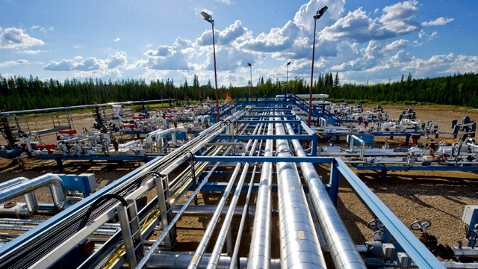The sequester and the debt ceiling, explained
President Obama and lawmakers are facing several important fiscal deadlines. One is to avoid the $1.2 trillion in spending cuts included in sequestration and another is raising the country’s debt ceiling. Here is a look at some of the issues involved in these two fiscal challenges.
Sequester [chart 1]
If Congress and Obama can’t reach a deal to avoid sequestration, then the country would see budget cuts of $1.2 trillion through 2021. Defense Secretary Leon Panetta has said that the defense cuts would be a “disaster.” But if you look at this graph, the blow isn't as bad as the military has faced in the past. Even if the sequestration was implemented, the drop in spending would be less than the military experienced after the Korean, Vietnam or Cold wars.
The Center for Strategic and International Studies
Related Content
More analysis from Wonkblog
Sequester [chart 2]
Nonetheless, defense spending will take the hardest hit in the sequester — relative to its current share of the total budget, according to this chart. In other words, even though defense is 17 percent of the budget, it is nearly half of the cuts contained in the sequester. (What’s worth nothing, though, is that nondefense discretionary spending takes a similarly disproportionate hit; it’s just a smaller portion of the budget than defense is.)
Heritage Foundation
Sequester [chart 3]
Here’s a look at the sequester-cuts situation as a whole. The big-ticket takeaway is that there is huge variation in how the sequester affects different parts of government. Some programs will see their budgets cut by 10 percent, others by just 2 percent. None of these cuts, by the way, apply to any program that was specifically exempted from the sequester.
Sarah Kliff / The Washington Post
Debt ceiling [chart 4]
Another fiscal issue that keeps coming up is whether to raise the nation’s borrowing limit. As you can see from this chart, the United States has increased the limit numerous times since the mid-’90s. But earlier this year, Congress voted to suspend the debt limit until May 19, a move that, according to the Bipartisan Policy Center, will increase the ceiling about $450 billion. This graph shows how this increase compares with the others. Congress, however, will have to revisit the debt-limit debate in August when the country could default on its debt if the ceiling is not raised again.
Dylan Matthews / The Washington Post
Debt ceiling [chart 5]
Another consequence of not raising the debt limit is the nation could enter another recession. This in turn would increase the deficit as this graph shows.
Dylan Matthews / The Washington Post
Debt ceiling [chart 6]
The deficit would also increase because interests rates would spike. Hitting the debt ceiling is basically the United States shouting to the world, “We’re in trouble!” The longer the United States is over the limit, the greater the risk that the country will have to stop paying out interest on debt, which constitutes default. So hitting the debt ceiling would cause a big spike in interest rates, which in turn means larger interest payments later on, increasing the deficit.
Terry Zivney and Richard Marcus
Federal deficit [chart 7]
Jed Graham calls this "the deficit chart that should embarrass deficit hawks": "Here’s a pretty important fact that virtually everyone in Washington seems oblivious to: The federal deficit has never fallen as fast as it’s falling now without a coincident recession," he writes for Investor’s Business Daily. This is true whether or not the sequester goes into effect.
Congressional Budget Office; Office of Management and Budget


























































































